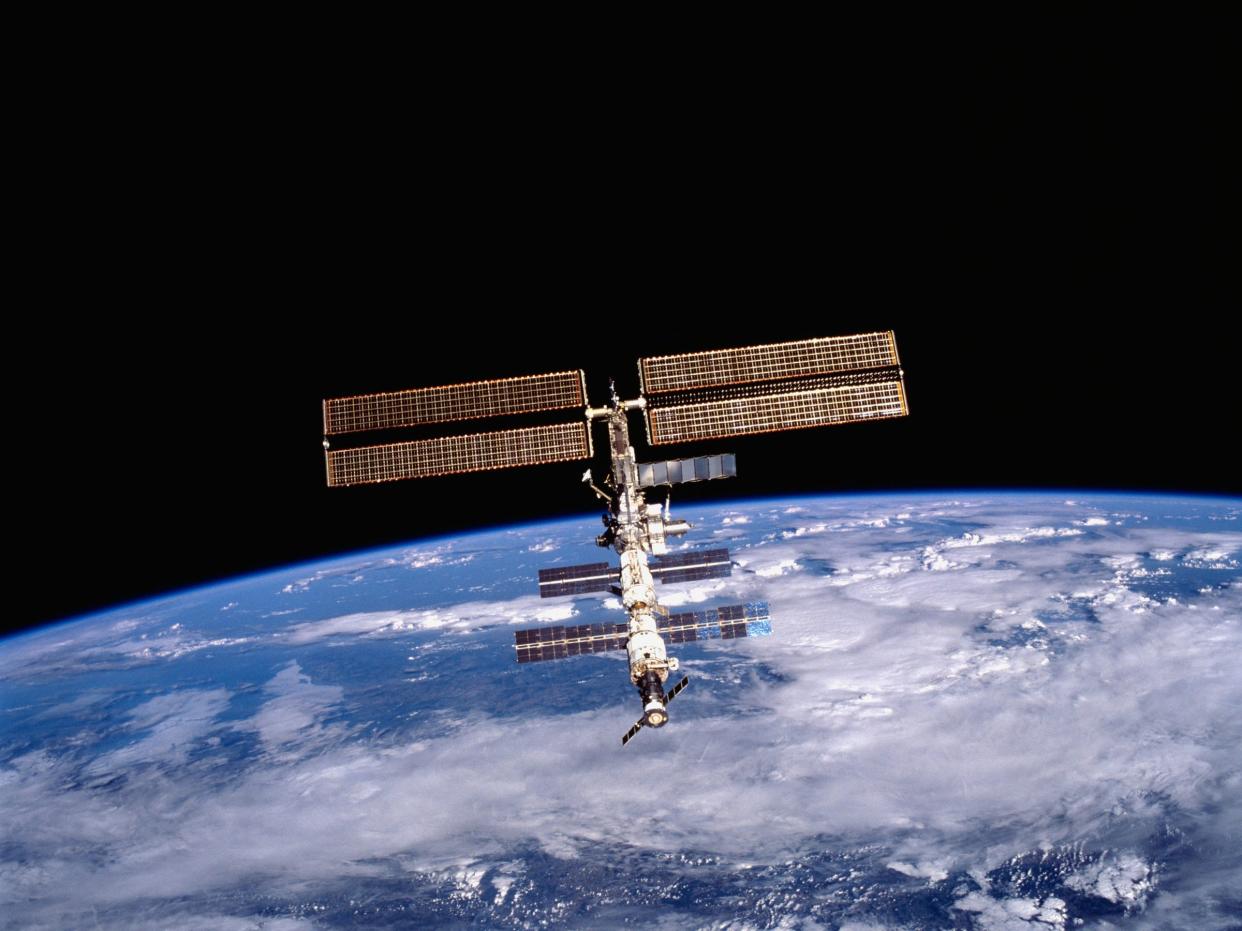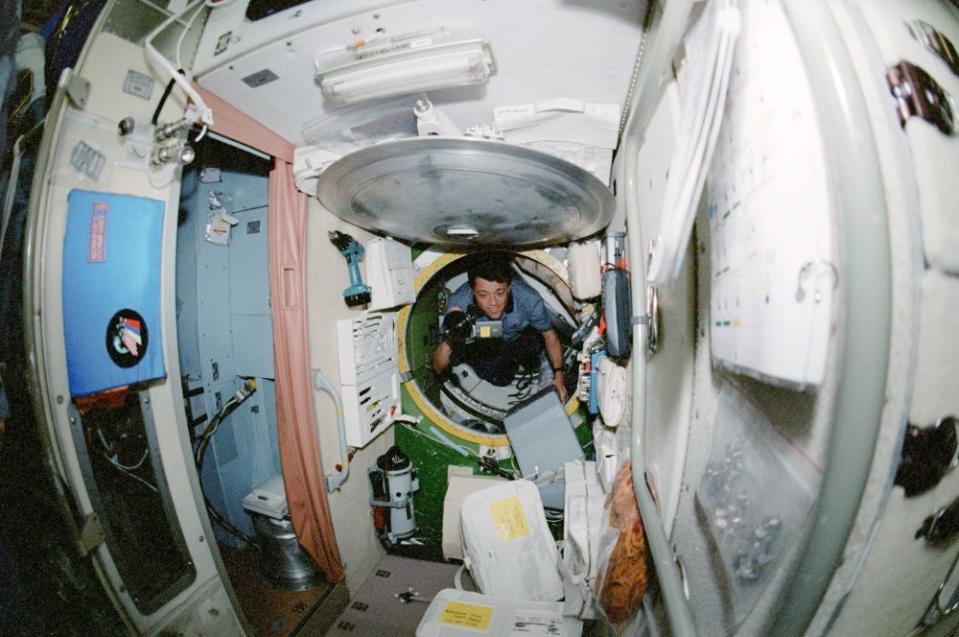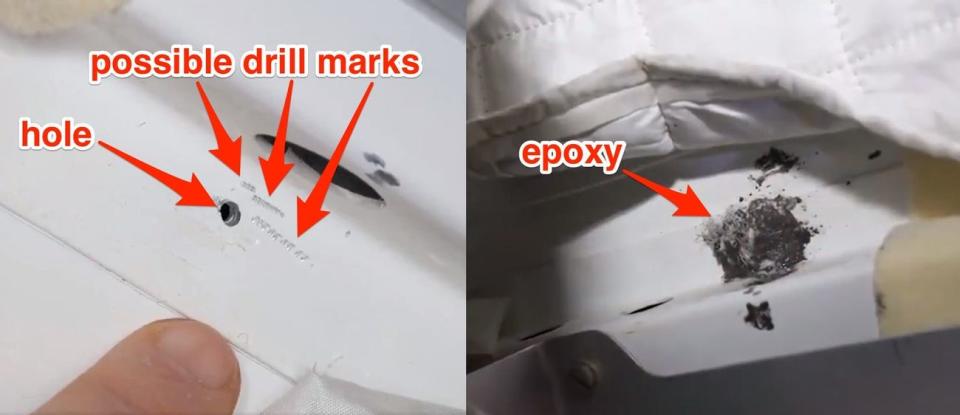Space-station crew members just found an elusive air leak by watching tea leaves float in microgravity

The International Space Station has been leaking an unusual amount of air for more than a year.
A cosmonaut finally found the leak by releasing tea leaves to float freely in the station's Russian side. He saw them cluster near a crack on the wall.
The crew has patched the leak with tape, but it might not hold for long.
The International Space Station has been leaking an unusual amount of air since September 2019.
At first crew members held off on troubleshooting the issue, since the leak wasn't major. But in August the leak rate increased, prompting astronauts and cosmonauts aboard the orbiting laboratory to try to locate its source in earnest.
Roscosmos, Russia's space agency, announced on Thursday that crew members had finally pinpointed the leak after devising an unusual test: They let tea leaves guide their search.
The cosmonaut Anatoly Ivanishin released a few leaves from a tea bag in the transfer chamber of the Zvezda Service Module, the section of the station's Russian segment that houses a kitchen, sleeping quarters, and bathroom. Then the crew members sealed the chamber by closing its hatches and monitored the tea leaves on cameras as they floated in microgravity.
The leaves slowly floated toward a scratch in the wall near the module's communication equipment — evidence that it was a crack through which air was escaping.
The crew has since patched the leak using Kapton tape, Roscosmos said on Monday.
A yearlong air leak on the space station

The International Space Station always leaks a little air. Normally, resupply missions carry highly pressurized containers with a mix of oxygen and nitrogen to replace the air the ISS loses. The mix is designed to mimic Earth's breathable air.
But in September 2019, the standard leak rate increased slightly. That wasn't considered a major risk, but by August that already elevated rate had increased fivefold, to 3.1 pounds of air per day from 0.6, the Russian news agency Ria Novosti reported. So over the past two months, crew members hunted for the leak by isolating sections of the station and monitoring their pressure changes.
At first, crew members hunkered down in the Zvezda module while they tested the ship's other sections. When they couldn't find evidence of leaks in those sections, they determined that it was likely in Zvezda itself. Eventually, the astronauts and cosmonauts narrowed the source to Zvezda's transfer chamber. But they still couldn't find the leak's exact location.

Then came the tea-leaf trick.
"We believe that we have really identified the probable leakage area," Ivanishin said, according to Russia's TASS news agency.
The tape the crew members put over the crack can remain stable and sticky across a wide range of temperatures, including the near absolute zero of space. But they think the tape is unlikely to hold for long and hope to replace it with a more reliable patch soon.
"Perhaps we should try hard patches our partners have? We can talk with them. This is because the current patch is not so efficient," a crew member said, according to TASS.
Roscosmos did not immediately respond to Business Insider's questions, but the agency said in a tweet on Monday that it was "working out a program of operations to permanently seal the leak location."
A NASA representative, Daniel Huot, told Business Insider that the leak "continues to pose no immediate danger to the crew at the current leak rate."
Not the first problem on the space station's Russian side
The leak is one of several recent issues on the space station, which is starting to show its age after outlasting its 15-year life expectancy by five years.
The station's Russian segment houses some of the station's oldest modules. In the past few months, it has seen a toilet go bust and temperatures mysteriously increase. On Wednesday, the segment's oxygen-supply system broke down. Crew members had fixed the system by Saturday, Roscosmos said.
But in aggregate, the failures are indications that the Russian side of the ISS is probably in need of upgrades.
"All modules of the Russian segment are exhausted," Gennady Padalka, a cosmonaut, told Ria Novosti.
This latest leak also wasn't the first on the Russian side. In August 2018, crew members discovered a 2-millimeter drill hole in part of a Russian Soyuz spaceship that was docked to the station.

The hole seemed to stem from a manufacturing defect; someone on Earth had apparently plugged it with paint, hoping nobody would notice. The paint, it appeared, later broke off. Cosmonauts eventually patched that hole with an epoxy sealant.
Katya Ionova contributed translation assistance for this story.
Read the original article on Business Insider

